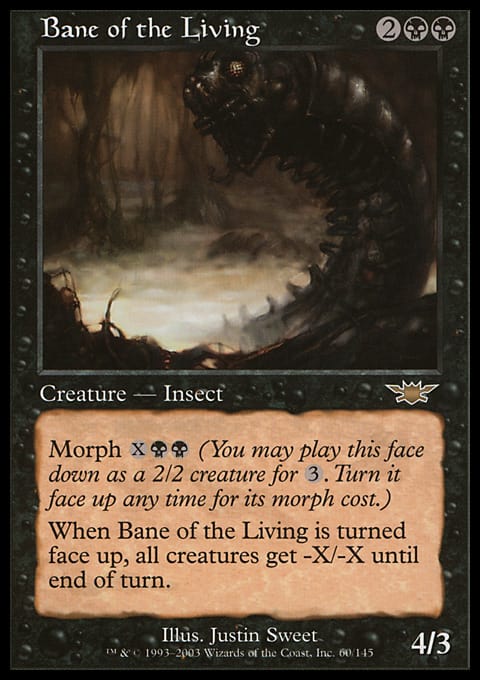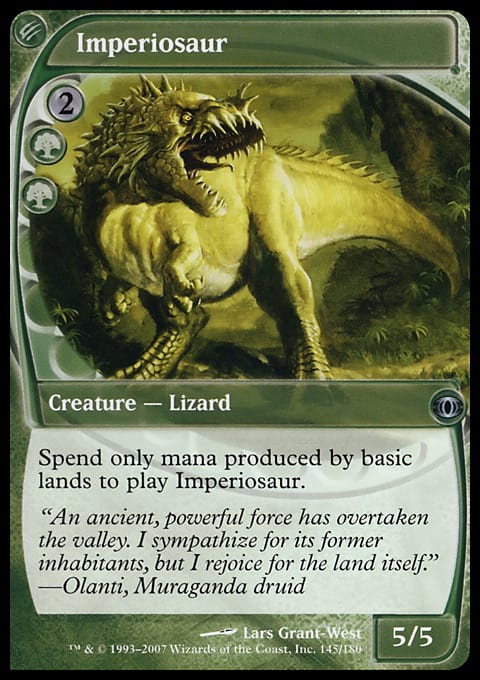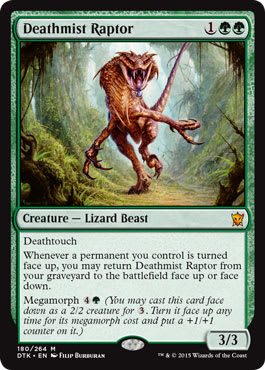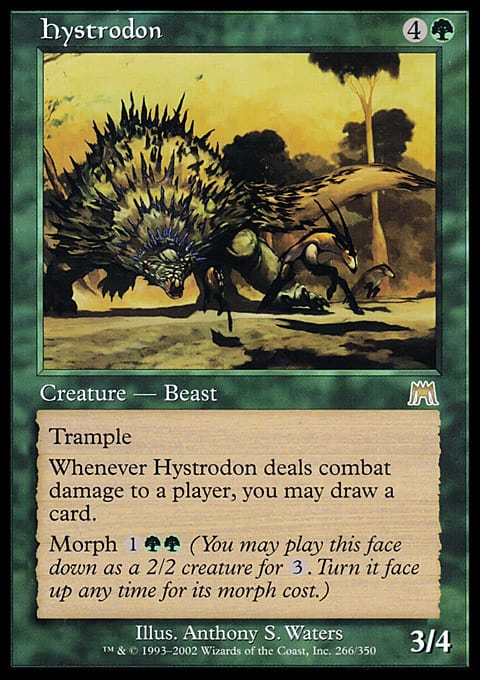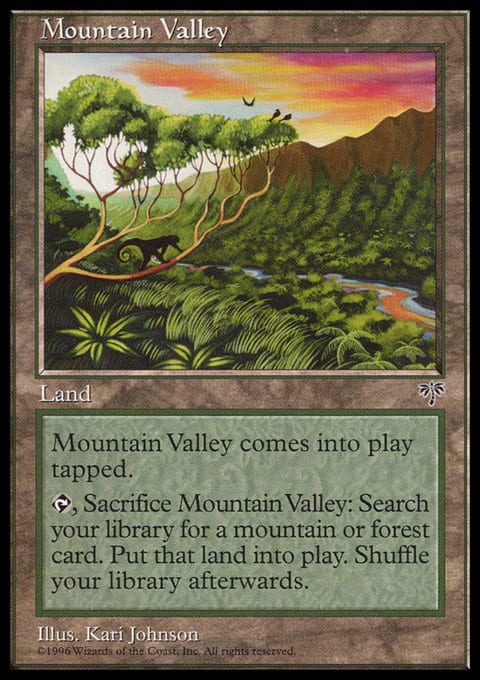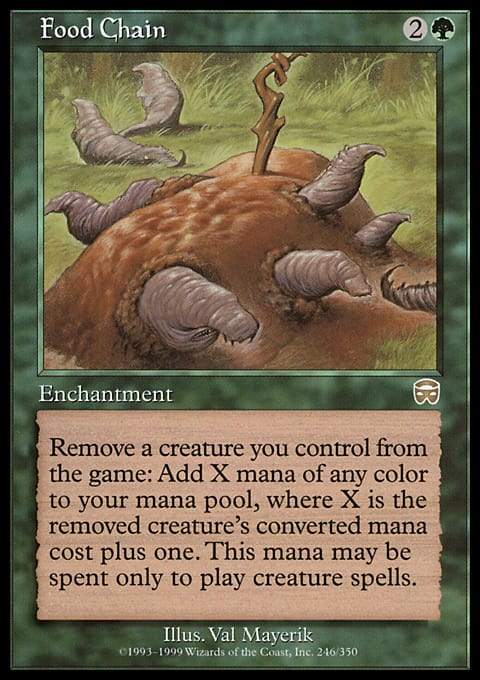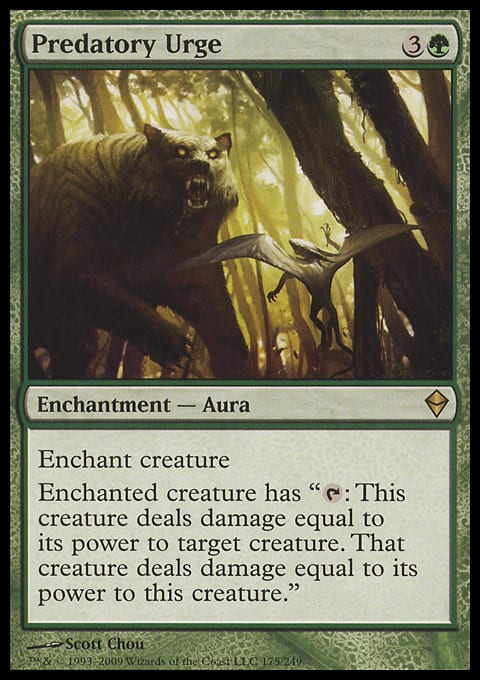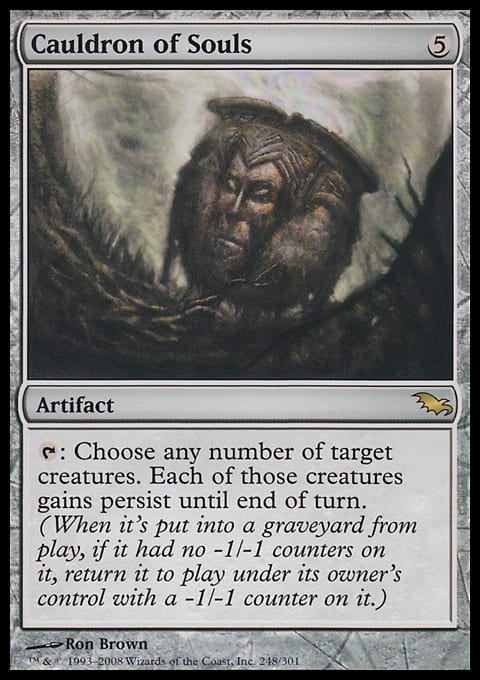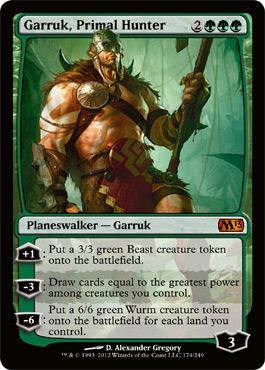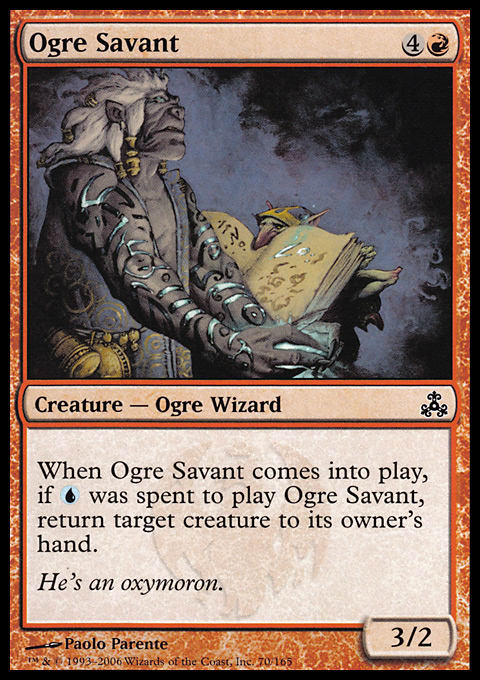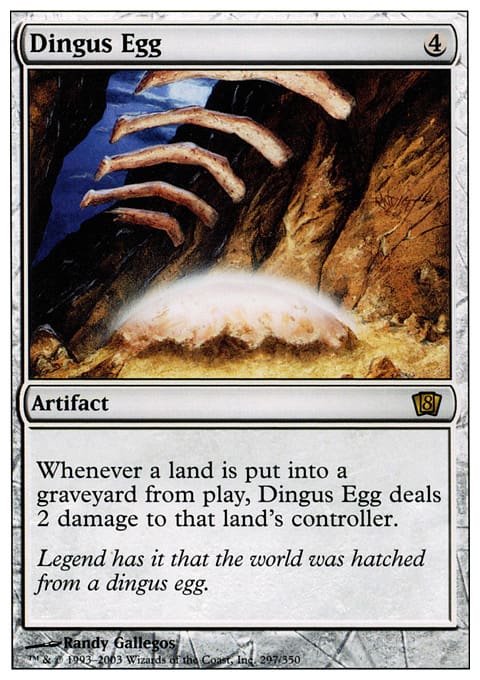The competitors have submitted their decks. The judges have issued their scores. Today, you decide who wins Battle Gray Ogre.
The challenge was for Ironroot Chef Mike Linnemann and Ironroot Chef Ant Tessitore to build flavorful decks around Magic’s most vanillia of creatures: Gray Ogre.
For the first 1v1 @IronrootChef Throwdown btw @VorthosMike & @AntMTG, I, the Chairman, declare the secret ingredient to be...GRAY OGRE!!!!!!
— Nathan Holt (@WalkThePlanes) June 19, 2015
The secret, of course, lay in the subtle and hidden flavor that Gray Ogre has:
This is how the chefs handled it.
Ironroot Chef Mike Linnemann
I began my brew reading the flavor text closely and trying to gain some insight into who this ogre is. It’s probably someone working under Gnerdel the philosopher, and that got me thinking to Warcraft II, with their ogre magi, bloodlust, and waddling abilities. I disregarded the idea after thinking of the ogres of my childhood growing up in Germany. Many town statues have ogres eating children for bad deeds. Jack and the Beanstalk and Hansel and Gretel aren’t uniform stories—they’re mixes of a variety of closely related folklore stories. My father actually translated some of the more obscure Grimms’ Fairy Tales into “high German” and then into English for usage. Why he never talks about it more is always been strange to me.
So, I went from the canon instead of my background and used the flavor text. This gray ogre probably has a partner—making two copies necessary—and lives its life under a philosopher, Gnerdel, who also has a partner. Of the eleven ogre shamans in Magic, one seemed to use a full belly and ample mana and was larger than our gray ogre: Deathforge Shaman. That began my shell.
The second part of the flavor text was an everlasting goal to be at the top of the food chain. This may suggest the tournament-playable card Food Chain to a layman, but to a Vorthos, it has to mean an actual consumption of creatures. The devour mechanic was close, but it didn’t relate to our main character duo of Gray Ogre or the Deathforge Shaman leader.
I came to look for small creatures that would be “eaten,” so to speak, and I noticed Thick-Skinned Goblin. The ogres can’t eat this little guy, due to his thick skin, so they keep him around because he’s useful. He’s basically the one who decides what’s fit for the ogres to eat—by this representational, he can live and be useful to us or die via being eaten via the mechanic of echo. If a goblin or small creature somehow pays tribute or becomes useful, an echo is paid by the ogre shaman, and that is done through an order to the Thick-Skinned Goblin.
I looked for echo cards and found an old-school art favorite Goblin War Buggy. I added Stingscourger, who must immediately prove his usefulness or become a meal, and the Avalanche Riders—foolish humans who run amok near a hideout spot that the ogres rarely use, shown by the Odyssey basic land. Mogg Fanatics are really just thinly-skinned goblins, and they pack a delicious punch when needed.
The spells all deal with the ogres needing “volunteers” for service. They capture first, like all good folklore ogres, and then decide what to do with them. Custody Battle is the extreme form of taking something, with Harness by Force, Grab the Reins, and Unwilling Recruit all being “possible food” options if the recruited creature isn’t useful enough. They’re a pragmatic race—eat, build army, or nab things for more eats.
The club is just their jam, which makes you wonder why more whapping clubs aren’t in Magic.
I like the Forgotten Cave as the area in painting below where the Gray Ogre lives. The painting is of Norandino and Lucina Discovered by the Ogre by Giovanni Lanfranco of 1624 and depicts the two mythological people being captured and then outsmarting the ogre. I’d like to think maybe one avalanche rider escapes, but like Lanfranco shows, they probably don’t.
The other lands, Shinka, is where the ogre shamans live; Goblin Burrows is where they’re stealing goblins from; and Kher Keep is in because ogres “think” they can eat those yummy creatures, but they aren’t sure how to yet.
Gray Ogre ? Ironroot Chef | Mike Linnemann
- Creatures (22)
- 2 Deathforge Shaman
- 2 Gray Ogre
- 3 Goblin War Buggy
- 3 Mogg Fanatic
- 4 Avalanche Riders
- 4 Stingscourger
- 4 Thick-Skinned Goblin
- Spells (14)
- 3 Grab the Reins
- 2 Harness by Force
- 4 Unwilling Recruit
- 3 Custody Battle
- 2 Ronin Warclub
- Lands (22)
- 13 Mountain
- 2 Goblin Burrows
- 3 Forgotten Cave
- 2 Kher Keep
- 2 Shinka, the Bloodsoaked Keep
Ironroot Chef Tessitore
Battle Gray Ogre
I like flavor profiles in my food. For Battle Gray Ogre, I wanted to break the card down into its individual components and allow each to shine through in the deck’s construction. The four components I chose to focus on are name, art, flavor text, and gameplay.
Name
Gray Ogre has been in the game since Alpha and has gone on to become a part of Magic lingo as a way to describe a vanilla 2/2 creature that costs 3 mana to summon. Creatures with morph, by their very definition, can all be considered able to be played as “Gray Ogres”—2/2s for 3 mana. By including ten creatures with morph in my deck, I was able to up the number of “Gray Ogres” from four to a delicious fourteen.
Art
 |  |
Image found here | |
Gray Ogre’s art made me think back to my days eating Fruity Pebbles in my youth (okay, and last Saturday, but whatever—they are delicious). She is obviously in a cave, and so I wanted to play up that caveman theme in my deck. The card's flavor text doesn’t hint at ol’ Gnerdel being from any plane in particular, so I decided to base my entire deck on the plane of Muraganda. Muraganda has a prehistoric/Jurassic Park vibe to it, and so I only included cards (Including all lands) the art, names, and flavor text of which all could be printed as if though were from Muraganda with little to no issue.
Flavor Text
From Gray Ogre’s flavor text, we know that Gnerdel is all about living high on the food chain. She never eats vegetarians and only eats things capable of eating other sentient beings. In order to play up the food-chain aspect, I included cards that sounded and played like creatures that hunted other creatures. In order to play up Gnerdel herself eating, I included a single cauldron for her to cook her meals in. Last, in order to play up the fact that Gnerdel only eats things capable of eating “non-vegetarian,” I tried to make sure that any time a creature was shown attacking another creature in the art, both would be capable of eating meat.
Gameplay
Finally, I wanted to make sure that gameplay did three things:
- Showcase abilities that played and felt like life on the food chain of prehistoric Muraganda
- Showcase the power of a Gray Ogre
- Could beat my competitor’s deck
I included cards like Predatory Advantage and Survival of the Fittest to simulate the food chain of this dangerous prehistoric world. Muraganda Petroglyphs fits perfectly with the flavor and is a way to make my Gray Ogres really hit hard. The card also works extremely well with all my morphs (which gain the +2/+2 bonus when they are face down as gray ogres). Finally, Cave People is my on-flavor metagame breaker, as I assumed my opponent's deck would contain at least one Mountain to help cast his or her Gray Ogres.
Bonus Planeswalker Gem
Last but not least, I included one copy of Garruk, Primal Hunter because he is crazy-synergistic with the deck (Petroglyphs) and fits on flavor (Primal Hunter), and I think he and Gnerdel would hit it off if he were to ever stop by her cave for predator stew.
Gnerdel?s Dinner Date ? Ironroot Chef Kitchen-Table Casual | Ant Tessitore
- Creatures (20)
- 2 Bane of the Living
- 2 Blistering Firecat
- 2 Cave People
- 2 Hystrodon
- 4 Deathmist Raptor
- 4 Gray Ogre
- 4 Imperiosaur
- Planeswalkers (1)
- 1 Garruk, Primal Hunter
- Spells (17)
- 2 Hunt the Weak
- 2 Food Chain
- 2 Survival of the Fittest
- 3 Predatory Advantage
- 3 Predatory Urge
- 4 Muraganda Petroglyphs
- 1 Cauldron of Souls
- Lands (22)
- 2 Mountain
- 7 Forest
- 1 Undiscovered Paradise
- 2 Bloodfell Caves
- 2 Forgotten Cave
- 2 Geothermal Crevice
- 2 Jungle Hollow
- 4 Mountain Valley
- Cave People by Drew Tucker from The Dark
- Hunt the Weak by Raoul Vitale from Magic 2015
- Survival of the Fittest by Pete Venters from Exodus
- Forest #292 by Tony Roberts from Mirage
- Mountain #304 by John Avon from Mirage
The Judges
Nate’s Judgment
 | Nathan Holt @walktheplanes | Nate’s the host of Walking the Planes, a documentary series about Magic: The Gathering with a healthy dose of sketch comedy (for value). |
Ironroot Chefs! Let me begin by saying how impressed I am by your offerings today. Each brew is chock-full of flavor, enough to make any Ironroot Chef blush. That said, we must hold you to the highest possible standard. To be an Ironroot Chef means withstanding the brunt of my wrath as well as my praise. Let us begin.
Mike
Your concoction is fascinating. Your experiment goes beyond what my imagination thought was possible in a Gray Ogre–based brew. This a good thing. On the other hand, many of your creative choices seem arbitrary, strange, and random. Perhaps you are so brilliant that you surpass my understanding of flavor. More likely, you are a loose cannon who lives in a fantasy world of your own creation.
It’s interesting you assumed our vanilla Gray Ogre from Alpha is not, in fact, Gnerdel. After all, the legendary card type did not yet exist in Alpha. Choosing another ogre to play Gnerdel is interesting. Deathforge Shaman is a neat choice, as she is “hungry for mana,” fitting the main theme of diet and consumption. But why, then, do you have two Deathforge Shamans? Is Gnerdel legendary or not? Even if we take your word that she needs a mate, why is the mate a clone of her? Could it not be the Gray Ogre? Or it could be perhaps another “smart ogre,” such as Ogre Savant? What is going on here?
The Act of Treason–type effects are a clever way of portraying Gnerdel’s hunting of enemy creatures. But where are the sacrifice outlets? Does she let her prey escape? Or does she consume them? Why does she need “volunteers,” as you call them?
While many of your creative choices are flawed, such as in the examples above, you had one stroke of genius that saved your Creativity score from being a 0, and its boldness is breathtaking.
The echo theme is amazing. It brought tears to my eyes. It made me realize that you truly are capable of becoming an elite Ironroot Chef. Having creatures that are lower on the food chain than Gnerdel, who serve her and are then consumed by her, is difficult to achieve without interacting with the opposing deck. Most would choose a sacrifice theme to portray consumption within a deck, but you chose echo. The Goblins are hungry for mana, but Deathforge Shaman (Gnerdel) is hungrier. And so she consumes them, one by one, once they’ve outlived their usefulness. And unlike, say, tokens, each echo creature brings a unique ability to the table, illustrating them as characters. Even Magic HoFer Darwin Kastle is food for Gnerdel. Darwin isn’t a vegetarian, is he?
To sum up, many of your choices are loosely executed. The echo theme is brilliant, but I wanted to see more of your “ingredients” play into the theme that’s described in Gray Ogre’s flavor text. Your Creativity score is low not because you’re uncreative, but rather because you are too creative for your own good. With time and discipline, you will undoubtedly harness your powers and become a champion Ironroot Chef.
Creativity: 1
Boldness: 3
Adherence to Theme: 1
Ant
This deck is a masterpiece. You’ve weaved a coherent world that is consistent with the story told in Gray Ogre’s flavor text. Beyond that, you’ve taken measures to strengthen the competitive power of the deck without weakening its flavor. This is a marvelous achievement.
Morphs were an obvious choice that I expected to see. Not only colloquially referred to as “Gray Ogres” while face down, they cost “gray mana” to cast and are “gray” colorless creatures.
Gnerdel is also very clear about preferring to eat carnivores. Setting your world in Muraganda and showcasing all those huge, carnivorous monsters showcases a perfect understanding of the importance of every creature’s dietary habits. To boot, it plays up the resonance of the recent release of Jurassic World, a fabulous film that I saw in 3D over the weekend.
But how does Gnerdel “eat” these monsters? As luck would have it, the card Food Chain, referenced by name in Gray Ogre’s flavor text, is a sacrifice outlet for creatures. Adding cards like Predatory Urge and Cauldron of Souls to play up the consumption theme is icing on the cake.
And a one-of Garruk as Gnerdel’s OkCupid match? Ding! I foresee them with a large of family of 3/3 Beasts in the near future.
I would have liked to see more boldness. Your “dash of seasoning” via Cave People and Predatory Advantage is on theme, but with your bases so well covered, I’d like to see more risks taken. Maybe a Graypelt Hunter and a few Allies are lurking around, trying to poach Gnerdel. Maybe a Dingus Egg is waiting to hatch into a dinosaur. I wanted something unexpected—something to make me raise an eyebrow.
Creativity: 3
Boldness: 1
Adherence to Theme: 3
Adam’s Judgment
 | Adam Styborski @the_stybs | Adam is the Content Manager for Gathering Magic. He's a casual player at heart and weekly columnist for MagicTheGathering.com. He also travels the country for Pro Tour and Grand Prix coverage, and he shares his Pauper Cube everywhere. |
Mike
I found your deck to be meaty, yet bland. I liked the general narrative you tried to craft. Beastly ogres with craven Goblins and the like serving them feels like a natural trope, and that’s my problem with it. You fulfilled a story complete with brawny beasts taking what they deem theirs but that could have been painted with many other creature types too.
You needed more color, more uniqueness, to win me over here. I don’t see Ogres that prey upon the smart, but dullards simply taking what they want. They’re still just plain Ogres. My score for you is fitting for fulfilling without flair.
Creativity: 2
Boldness: 2
Adherence to Theme: 2
Ant
Ant, your deck suffers the opposite problem I have with Mike’s: Far too many flavors competing. I appreciate your efforts at layering, looking for complementary tastes that sum to something more: That’s what any Ironroot Chef should strive for. What I found was you added spices that were too strong. Forcing a focus on a plane complicated things, and while your deck evolved from there that plane wasn’t the focus of the challenge.
I will grant your follow through was beautiful and deep, but going too far put the Gray Ogre too far out of sight. If you’re going to add something strong make sure it highlights, not overshadows, the ingredients that are more important.
Creativity: 3
Boldness: 2
Adherence to Theme: 1
The Vote
Tessitore has a 3-point lead over Linnemann from the judges’ scorecards, but it’s up to you to decide if that’s really the case. Cast your votes now to determine which chef really won Battle Gray Ogre!
[poll id="541"]
[poll id="542"]
[poll id="543"]
[poll id="544"]
[poll id="545"]
[poll id="546"]
Voting closes midnight Thursday, and the first winner will be announced Friday (6/26/2015). Follow @IronrootChef on Twitter for the final score, and be sure to share your ideas for secret ingredients. Our chairman Nate will continue to use your ideas to challenge our chefs to the core.
@WalkThePlanes @IronrootChef @VorthosMike @AntMTG pic.twitter.com/0Bj40Thcvu
— James Arnold (@thatguyjames2) June 19, 2015
And if you think you have what it takes to challenge the chefs, send an e-mail to IronrootChef AT gmail DOT com with all of your flavorful qualifications.




















